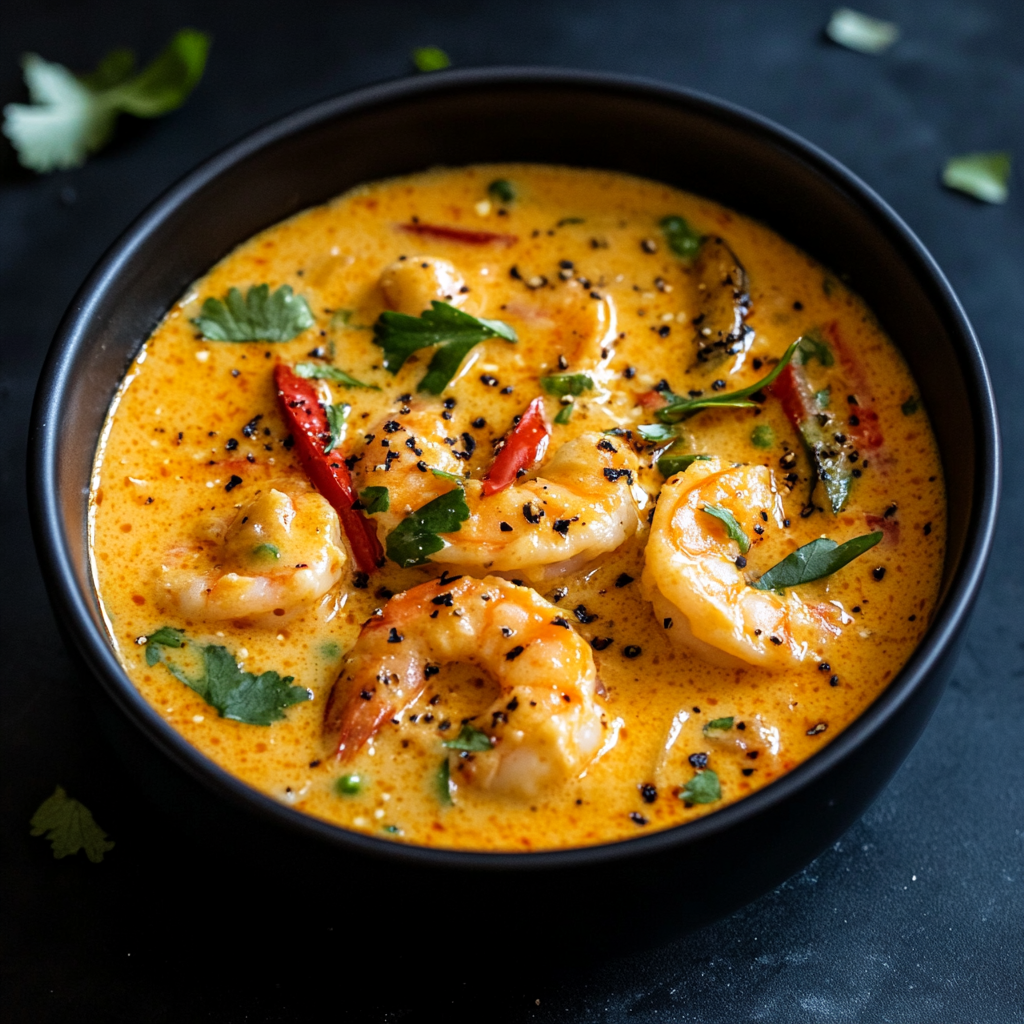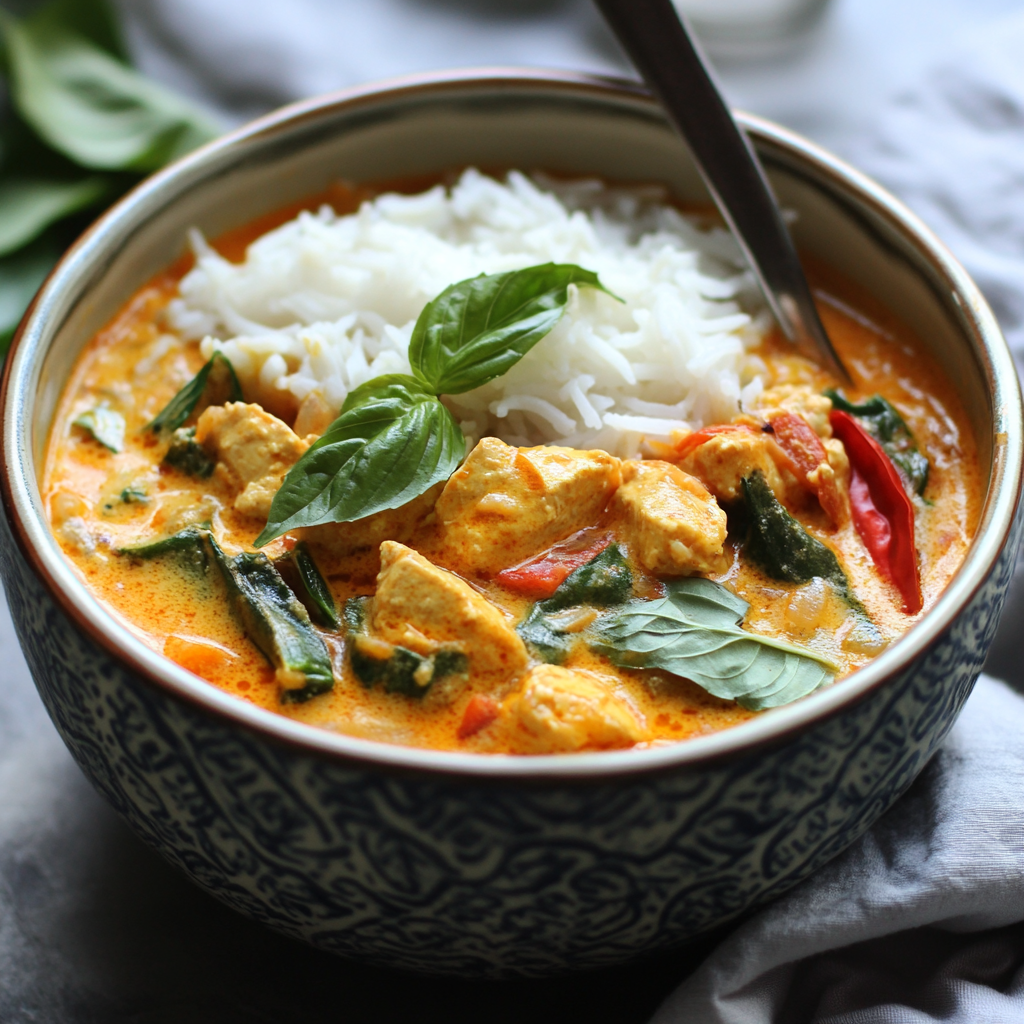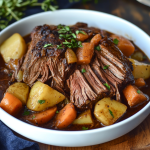If you’re looking for a dish that’s rich, comforting, and bursting with exotic flavors, Thai Coconut Curry should be at the top of your list. This classic Southeast Asian dish brings together creamy coconut milk, fragrant spices, fresh vegetables, and your choice of protein for a meal that’s both satisfying and soul-warming.
Let’s dive into what makes Thai Coconut Curry so special, how you can prepare it at home, and tips to make it your own.
What is Thai Coconut Curry?
Thai Coconut Curry is a beloved traditional dish that uses coconut milk as its creamy base combined with a blend of herbs, spices, and curry pastes. It typically includes fresh vegetables like bell peppers, carrots, and snap peas, along with proteins like chicken, tofu, shrimp, or beef.
The beauty of Thai Coconut Curry lies in its balance of flavors — it’s a beautiful dance between sweet, spicy, savory, and slightly tangy. Unlike Indian curries, which often use dairy like cream or yogurt, Thai curries depend heavily on coconut milk, giving them a lush, tropical flavor that’s both rich and refreshing.
Key Ingredients
- Coconut Milk: The star ingredient that creates a luscious, creamy sauce.
- Curry Paste: Red, green, or yellow curry paste provides the depth of flavor. Each type offers varying levels of heat and spice.
- Protein: Chicken, tofu, shrimp, or beef are commonly used.
- Vegetables: Bell peppers, carrots, zucchini, mushrooms, and baby corn add color, texture, and nutrition.
- Aromatics: Garlic, ginger, and onion are typically sautéed at the start for a flavorful base.
- Fish Sauce and Lime Juice: These ingredients add authentic Thai saltiness and brightness.
- Fresh Herbs: Cilantro, Thai basil, or green onions for garnishing.
How to Make Thai Coconut Curry at Home
Ingredients:
- 1 tablespoon coconut oil
- 1 small onion, diced
- 2 garlic cloves, minced
- 1 tablespoon fresh ginger, grated
- 2 tablespoons Thai red curry paste
- 1 can (13.5 oz) full-fat coconut milk
- 1 cup vegetable or chicken broth
- 1 tablespoon fish sauce (or soy sauce for a vegetarian version)
- 1 tablespoon lime juice
- 1 pound chicken breast or tofu, cubed
- 2 cups mixed vegetables (like bell peppers, carrots, snap peas)
- Fresh cilantro or Thai basil for garnish
- Cooked jasmine rice, for serving
Instructions:
- Sauté the Aromatics: In a large skillet, heat coconut oil over medium heat. Add diced onions, garlic, and ginger. Cook until the onions are translucent.
- Add Curry Paste: Stir in the Thai red curry paste and cook for 1-2 minutes until it becomes fragrant.
- Pour the Liquids: Add the coconut milk and broth, stirring until well combined. Bring to a gentle simmer.
- Add Protein and Vegetables: Add the chicken or tofu and let it cook for about 5-7 minutes. Then, toss in your vegetables and simmer for another 5 minutes until tender but still vibrant.
- Season and Finish: Stir in the fish sauce and lime juice. Taste and adjust seasoning as needed.
- Serve: Spoon the curry over cooked jasmine rice and sprinkle with fresh herbs.
Tips for the Best Thai Coconut Curry
- Use High-Quality Coconut Milk: Full-fat coconut milk gives the richest flavor and creamiest texture.
- Customize the Heat: Add more curry paste or fresh chilies if you like it spicy. Use less for a milder version.
- Mix Up the Vegetables: Try adding bamboo shoots, baby corn, eggplant, or spinach for variety.
- Fresh Herbs are Essential: Garnishing with Thai basil or cilantro really brings the dish to life.
FAQs About Thai Coconut Curry
Q1: Can I make Thai Coconut Curry vegan?
Absolutely! Simply use tofu or tempeh instead of meat and substitute fish sauce with soy sauce or coconut aminos.
Q2: What’s the difference between red, green, and yellow Thai curry?
Red curry is usually the spiciest, green curry is herbaceous and fresh with a kick, and yellow curry is milder and slightly sweet due to the use of turmeric.
Q3: How do I store leftovers?
Thai Coconut Curry stores beautifully. Keep it in an airtight container in the fridge for up to 4 days. Reheat gently on the stovetop or in the microwave.
Q4: Can I freeze Thai Coconut Curry?
Yes, you can freeze it for up to 2 months. Just note that the coconut milk may separate slightly when thawed; a good stir while reheating brings it back together.
Q5: Can I use curry powder instead of curry paste?
Curry powder is quite different from Thai curry paste, which has ingredients like lemongrass, galangal, and kaffir lime. For authentic flavor, it’s best to use Thai curry paste.
Conclusion
Thai Coconut Curry is a celebration of vibrant flavors, comforting textures, and endless versatility. Whether you’re cooking for a quick weeknight dinner or hosting a special gathering, this dish always impresses. Plus, it’s incredibly easy to adapt to different dietary preferences and available ingredients.
Bringing a bowl of Thai Coconut Curry to your table is like offering a warm, fragrant hug — and once you master this dish, it’s bound to become a favorite in your recipe collection.
Ready to spice up your dinner plans? Give Thai Coconut Curry a try tonight and experience a taste of Thailand without leaving your kitchen!










